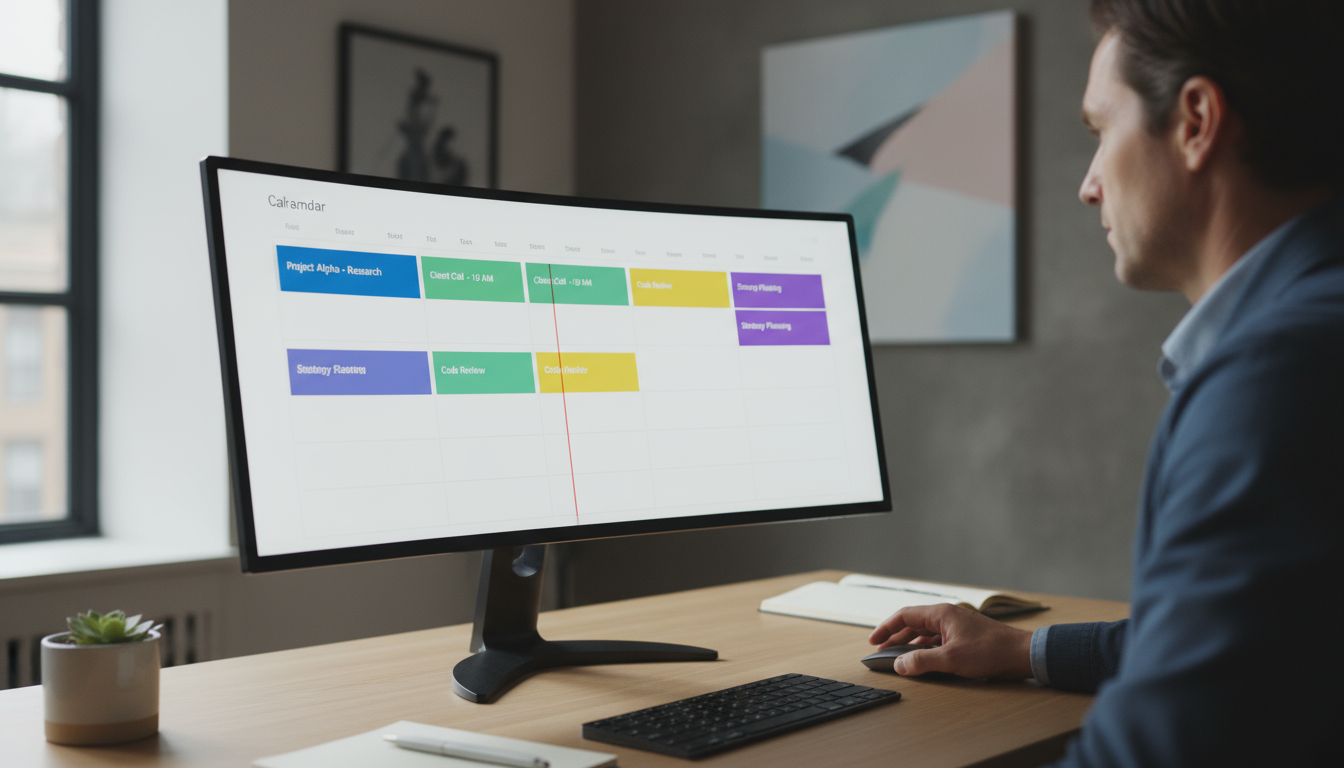
Remember the electric buzz of January 1st? That feeling that this year, things will be different. You wrote down your goals: “get in shape,” “advance my career,” “learn a new skill.” But by March, that initial fire has dwindled to a faint ember. The gym visits become sporadic, the online course gathers digital dust, and the grand career plans feel like a distant dream. If this sounds familiar, you are not alone. The problem isn’t a lack of desire; it’s a lack of a system. Vague wishes are not goals. They are destinations without a map.
A true goal getter mindset isn’t about raw willpower or waiting for motivation to strike. It’s about building a practical, repeatable framework that transforms abstract ambition into concrete, daily action. It’s about clarity, cadence, and compassion for the messy reality of life. This guide will provide you with that framework. We will move beyond simply setting goals and into the realm of building a reliable system for achieving them. Forget wishful thinking. It’s time to develop the powerful mindset for achieving goals that turns intention into reality. We will show you exactly how to get a goal getter mindset by breaking down the process into manageable, actionable steps. By the end of this article, you will have a clear blueprint for making meaningful progress, not just for a few weeks, but for the long haul.
📚 Table of Contents
- The Anatomy of a Goal-Getter Mindset: From Vision to Action
- The Art of Measurement: How to Know You’re Winning
- Defining Your Metrics: SMART, OKRs, and Beyond
- Leading vs. Lagging Indicators: The Secret to Staying Motivated
- The Review Cadence: Your Weekly Check-In
- The Science of Planning: Making Time for Your Goals
- Time Blocking: Your Goal’s Appointment with You
- Setting Checkpoints: Milestones on the Path
- Constraint-Aware Planning: The Reality Check
- Putting It All Together: Two “Goal-Getter” Scenarios
- Frequently Asked Questions About Building a Goal-Getter Mindset
- Your First Three Steps to Becoming a Goal-Getter

The Anatomy of a Goal-Getter Mindset: From Vision to Action
The most common mistake people make is setting isolated, often oversized, goals without connecting them to a larger purpose or breaking them into a workable process. A goal like “Become a senior developer” is daunting and undefined. Where do you even start? This is where a tiered system comes in, creating a clear line of sight from your ultimate vision to what you need to do today. This structure is the backbone of a sustainable mindset.
Step 1: The Big Vision (The “Why”)
This isn’t a specific goal; it’s your North Star. It’s a statement about the person you want to become or the impact you want to have. It should be inspiring and directional. For example, your vision might be “To become a financially independent creative professional known for my unique voice” or “To be a healthy, energetic parent who can keep up with my kids.” Your vision provides the deep, intrinsic motivation that will carry you through challenges. It answers the question, “Why does this matter?”
Step 2: Quarterly Themes (The “What”)
A year is too long to plan in detail, and a week is too short for significant progress. The 90-day quarter is the sweet spot. Break your big vision down into a single, focused theme for the next 90 days. If your vision is to become a senior developer, a Q1 theme might be “Master the fundamentals of cloud computing.” If your vision is health-focused, a theme could be “Build a consistent strength training habit.” A quarterly theme provides a clear, medium-term objective that is both ambitious and achievable. It prevents you from scattering your energy across too many initiatives at once.
Step 3: Weekly Focus (The “How”)
This is where the theme becomes tactical. Each week, you define a small number of key objectives that directly support your quarterly theme. These should be specific and measurable. For the “Master cloud computing” theme, a weekly focus might be “Complete the AWS Certified Cloud Practitioner course modules 1-3” and “Deploy one simple static website using S3.” This translates the “what” into the “how,” giving your week a clear mission.
Step 4: Daily Actions (The “Now”)
Finally, we arrive at the most critical level: the daily action. What is the one non-negotiable task you must complete today to serve your weekly focus? This could be “Study AWS concepts for 60 minutes” or “Perform my scheduled 30-minute kettlebell workout.” These daily actions are small, controllable, and build momentum. Completing them provides a daily win, which is the fuel that powers a true goal getter mindset. This system connects your grandest aspirations to the humble, repeatable efforts of today.
![]()
The Art of Measurement: How to Know You’re Winning
A system without feedback is a car without a dashboard. You might be moving, but you have no idea how fast, in what direction, or how much fuel you have left. Effective measurement is not about judging yourself; it’s about giving yourself the data you need to make smart adjustments. This is where we move from abstract ideas to concrete metrics, a crucial step in developing a mindset for achieving goals.

Defining Your Metrics: SMART, OKRs, and Beyond
You’ve likely heard of SMART goals, and for good reason. It’s a foundational tool for bringing clarity to your objectives. A SMART goal is:
Specific: What exactly do you want to accomplish? Instead of “get better at writing,” try “write and publish one 1,000-word blog post per week.”
Measurable: How will you track progress and know when you’ve succeeded? “One blog post” is measurable; “better” is not.
Achievable: Is this goal realistic given your current resources and constraints? Aiming to write a novel in a month while working full-time is likely not achievable.
Relevant: Does this goal align with your quarterly theme and overall vision? If your theme is career-focused, a goal to learn pottery might be fun but isn’t relevant to your current priority.
Time-bound: When will you achieve this goal? “By the end of this quarter” provides a deadline and creates urgency.
For those looking for a more advanced system, consider OKRs (Objectives and Key Results). An Objective is your ambitious, qualitative goal (e.g., “Become a confident public speaker”). The Key Results are the quantitative metrics that prove you’ve achieved it (e.g., KR1: “Deliver 3 presentations to the team without reading from notes,” KR2: “Receive an average feedback score of 4/5 on presentation clarity.”).

Leading vs. Lagging Indicators: The Secret to Staying Motivated
This is perhaps the most powerful concept for building a resilient mindset. Most people focus exclusively on the wrong type of metric.
A lagging indicator is the result you want. It’s an output goal. Examples include “lose 15 pounds,” “get 10,000 monthly visitors to my blog,” or “earn a promotion.” The problem? You cannot control them directly. They lag behind your actions. Obsessing over them can be incredibly demotivating because progress can be slow, erratic, and influenced by outside factors.
A leading indicator is a measure of the actions you take. It’s an input goal. These are the daily and weekly habits that you have 100% control over. Examples include “go to the gym 3 times this week,” “write 500 words every day,” or “spend 30 minutes networking on LinkedIn daily.” They lead to the desired result. Focusing your energy and measurement on leading indicators is the key. You build a profound sense of agency and momentum because you are celebrating the effort, not just the outcome. The outcome will eventually follow the consistent effort.

The Review Cadence: Your Weekly Check-In
Data is useless if you don’t look at it. The weekly review is a non-negotiable appointment with yourself to assess your progress. Set aside 30 minutes every Sunday to look at your weekly focus and your leading indicators. Ask yourself three simple questions:
- What went well this week? Celebrate your wins, no matter how small.
- What challenges did I face? Be honest and analytical, not judgmental.
- What will I adjust or focus on next week? Use the data to make a better plan.
What if you slip up? It happens to everyone. The goal-getter approach is to treat it as data, not a disaster. Did you skip a workout because you were exhausted? Maybe your input goal was too aggressive. The key is to never miss twice. One missed day is an accident; two is the beginning of a new, unwanted habit. Get back on track immediately. This resilience is a hallmark of an effective goal-achieving mindset.

The Science of Planning: Making Time for Your Goals
A brilliant system and perfect metrics are meaningless if your goals don’t find a home in your calendar. Hope is not a strategy. To truly adopt a goal getter mindset, you must move from “I’ll try to find time” to “I have made time.” This requires intentional, proactive planning that respects the realities of your life.

Time Blocking: Your Goal’s Appointment with You
Time blocking is the practice of scheduling your goal-related tasks directly into your calendar as if they were important meetings. Instead of a to-do list item that says “Work on presentation,” you block out a specific time slot: “Tuesday, 9:00 AM – 10:30 AM: Draft slides for Q3 sales presentation.” This simple act does several powerful things. First, it forces you to confront the reality of how much time you actually have. Second, it protects your focus from the endless stream of emails and notifications. Third, it dramatically reduces decision fatigue. You don’t have to wonder what to work on next; your calendar has already made that decision for you. This is how you ensure your most important work—the work that serves your vision—gets done.

Setting Checkpoints: Milestones on the Path
A 90-day goal can still feel distant. To maintain momentum, it’s essential to build in smaller milestones. Break your quarterly theme into monthly or even bi-weekly checkpoints. For a theme of “Launch a new podcast,” your checkpoints might be: Month 1, “Finalize concept, branding, and record first three episodes.” Month 2, “Edit episodes, set up hosting, and build a simple launch website.” Month 3, “Launch the podcast and execute the promotion plan.” These checkpoints create a series of smaller finish lines, providing regular opportunities to celebrate progress and build the psychological momentum needed to see a large project through. Each checkpoint you hit reinforces your identity as someone who follows through.

Constraint-Aware Planning: The Reality Check
Your life is not a laboratory. It’s filled with work deadlines, family commitments, and unexpected events. A rigid plan that ignores this reality is doomed to fail. Constraint-aware planning is the practice of designing your week with full knowledge of your limitations. Before setting your weekly focus and input goals, look at your calendar. Do you have a major work project due? Are you traveling? Is a family member sick? If it’s a particularly demanding week, it’s not failure to scale back your input goals. It’s smart. Planning to run five times during a week packed with late nights at the office is a recipe for guilt and burnout. Planning for two shorter runs is a realistic win. A true mindset for achieving goals is flexible and adaptive. You plan for the life you have, not the perfect, imaginary life you wish you had.

Putting It All Together: Two “Goal-Getter” Scenarios
Theory is useful, but seeing the framework in action makes it real. Let’s walk through two common scenarios to illustrate how this system translates into practice.

Scenario 1: The Career Pivot
The Vision: To transition from a role in customer support to a more creative and strategic position as a Product Marketing Manager within two years.
The Q1 Theme: “Develop a foundational understanding of product marketing principles.” This is a focused, 90-day learning objective that directly serves the long-term vision.
A Sample Weekly Focus: During week five of the quarter, the focus might be: “Complete the ‘Market Research’ and ‘Competitive Analysis’ modules of my online course and write a short analysis of a competitor to my company’s main product.” This is specific, actionable, and ties directly to the quarterly theme.
The Daily Actions: To achieve this, the daily actions would be time-blocked. For example: “Monday, Wednesday, Friday from 8:00 AM – 9:00 AM: Study course material.” and “Tuesday, Thursday from 8:00 AM – 8:45 AM: Work on competitor analysis document.”
The Measurement: The leading indicators (input goals) are “Hours of study completed per week” and “Number of practical exercises finished.” These are 100% controllable. The lagging indicator is the completion of the course and the quality of the analysis project. The focus is on consistently hitting the daily study blocks, knowing that this effort will inevitably lead to the desired outcome.

Scenario 2: The Learning and Fitness Goal
The Vision: To become fluent enough in Spanish to hold a 15-minute conversation and to improve overall health and energy.
The Q2 Theme: “Establish a consistent language learning habit and complete a 5k race.” This theme smartly combines two related areas, as physical health can boost cognitive function.
A Sample Weekly Focus: For week three, the focus could be: “Complete 4 Spanish lessons on my app, have one 25-minute practice conversation with a tutor, and complete all 3 scheduled training runs for the 5k plan.”
The Daily Actions: A typical day might include a time block for “20-minute Spanish lesson during lunch break” or an calendar appointment for “Tuesday 5:30 PM: 2-mile training run.” The actions are small, specific, and integrated into the existing daily routine.
The Measurement: The leading indicators are clear: “Number of Spanish lessons completed,” “Number of practice conversations held,” and “Number of runs executed per week.” The lagging indicators are “running pace improvement” and “ability to speak for longer durations.” The person focuses on ticking the boxes on the daily habits, trusting the process. If they feel overwhelmed, they can use constraint-aware planning to adjust, perhaps doing two runs instead of three during a busy week, ensuring they maintain momentum without burning out.

Frequently Asked Questions About Building a Goal-Getter Mindset
As you begin to implement this system, questions and challenges will naturally arise. Here are answers to some of the most common roadblocks on the path to developing a true goal getter mindset.
What if I have too many goals? I want to improve my career, health, finances, and relationships all at once.
This is a common and understandable ambition, but it’s a trap. Trying to advance on all fronts simultaneously ensures you’ll make meaningful progress on none. The power of the quarterly theme system is its focus. Pick the one area that will have the most positive impact on your life right now. Make that your theme for the next 90 days. The other areas can be in “maintenance mode.” You can still go to the gym, but it’s not your primary focus for improvement. Put your other ambitions on a “Someday/Maybe” list to revisit next quarter. A cluttered plan is an ineffective plan.
How do I handle conflicting priorities, like a demanding job and my personal goals?
The first step is to acknowledge that the conflict is real. You cannot add a major goal to your life without something else changing. This is where constraint-aware planning is essential. Look at your week honestly. If you work 50 hours, you cannot also plan to build a side business in 20 hours a week without sacrificing sleep, health, or family time. Your goals must fit the season of life you are in. It may mean your progress is slower, and that is okay. Slow, sustainable progress is infinitely better than a quick flameout. For more on managing stress and priorities, resources from organizations like the American Psychological Association can be very helpful.
My motivation always plummets after the first week. What am I doing wrong?
You are likely relying on motivation, which is a fickle and unreliable emotion. A robust mindset for achieving goals is built on systems and habits, not feelings. The secret is to focus maniacally on your leading indicators—your input goals. Make the daily action so small and easy that you can do it even on a day you have zero motivation. Don’t feel like writing 1,000 words? Fine, just write for 15 minutes. The act of starting and maintaining the chain of habit is more important than the output on any given day. Consistency builds momentum, and momentum creates its own motivation.
How do I measure an ambiguous goal like “be more confident” or “reduce my anxiety”?
You cannot directly measure a feeling. Instead, you must translate the abstract feeling into concrete, observable behaviors. What would a more confident version of you do? Perhaps they would speak up in meetings, volunteer for a new project, or stop apologizing for things that aren’t their fault. These are actions you can track. Your input goal could be “Contribute one idea in every team meeting this week” or “Practice a 10-minute mindfulness exercise every morning.” By focusing on and measuring the behaviors that lead to confidence or calm, you indirectly cultivate the internal state you desire. For information on mental health, consulting reputable sources like the National Institute of Mental Health is recommended.

Your First Three Steps to Becoming a Goal-Getter
This guide has provided a comprehensive framework, but knowledge is only potential power. Action is where the transformation happens. A goal getter mindset isn’t something you find; it’s something you build, one intentional decision at a time. It’s not about a massive, life-altering overhaul. It’s about starting small, building a system, and showing up consistently.
You don’t need to wait for a new year, a new month, or even a Monday to begin. You can start building your new mindset right now. Here are three simple, powerful decisions you can make today to get started:
1. Define Your Vision: Take just ten minutes. Grab a notebook and write down a one- or two-sentence vision for yourself one year from now. Don’t overthink it. What is the most important change you want to see? What direction do you want to be heading in?
2. Choose One Quarterly Theme: Based on that vision, what is the single most important thing you can accomplish in the next 90 days to move you closer to it? Not five things. Just one. Write it down. This is your primary focus.
3. Schedule Your First Weekly Review: Open your calendar right now and schedule a 30-minute, recurring appointment with yourself for this coming Sunday. Title it “Weekly Review.” This is the most crucial habit you can build. It’s the dedicated time that will keep your system running and ensure you stay on track.
That’s it. By taking these three small steps, you have already moved from passive wishing to active planning. You have laid the first stones on the path to achieving your most important goals.
Disclaimer: The information provided in this article is for informational purposes only and is not intended as a substitute for professional medical, financial, or legal advice. Always seek the advice of a qualified professional with any questions you may have.






